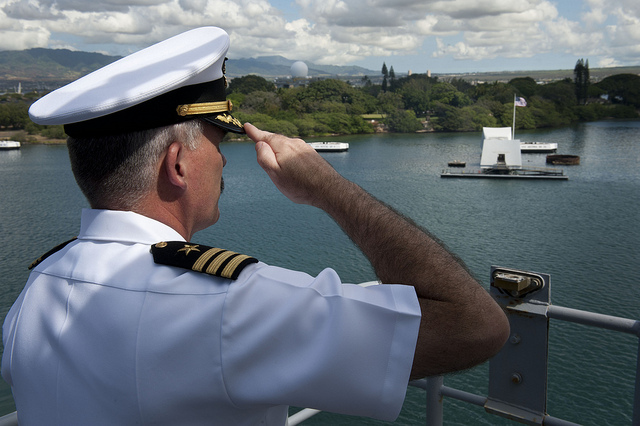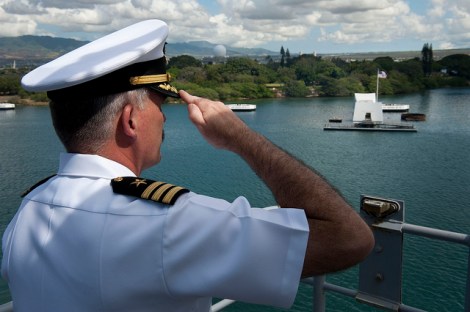You’re familiar, I’m sure, with the ongoing debate over whether or not massive solar installations should be built in the Southwestern desert. The question for some is whether or not the promise of clean energy outweighs the desire to protect endangered habitats and maintain a pristine landscape.
Here’s a similarly complex version of that same dispute: Should the Navy use an airstrip damaged during the attack on Pearl Harbor to house a solar array?
From the Wall Street Journal:
The Navy base on Ford Island, the bull’s-eye of Japan’s attack on Pearl Harbor seven decades ago, still bears scars from that day of infamy: The tarmac shows pockmarks from shrapnel, hangar windows contain bullet holes and the airstrip where the Japanese bombed U.S. planes remains eerily intact despite encroaching weeds.
Now, to the consternation of some retired military officers and history buffs, the U.S. Navy wants to cover up some of that history. The Navy wants to install 60,000 solar panels on the tarmac and surround them with a 7-foot-high fence.
The goal is to generate 11 megawatts of power from clean energy—the kind of energy that is supposed to comprise 25% of the Armed Forces’ total electricity use by 2025, according to a 2007 target set by Congress.
The installation would make it harder for visitors to see the rare remaining scars of war on the field, which previously gained fame in 1937 when Amelia Earhart damaged her Lockheed Electra there on an attempt to circumnavigate the globe. Whereas visitors can now walk on the airstrip, the solar panels would cover it entirely and make it inaccessible.
The Navy, as we keep mentioning, has been at the forefront of the military’s push to become more green. Generally, its initiatives are of clear, unqualified value to the branch and to the environment. Here, though, the question is far more nuanced.
Former Air Force Chief of Staff Merrill A. McPeak sent a letter in September to the Navy saying its proposal “baffles” him. “Why we should decide to deface what should be a national monument is a mystery,” wrote Mr. McPeak, a retired four-star general living in Lake Oswego, Ore. “Surely there is much other real estate at which sunlight can be gathered in Hawaii.”
The museum’s Mr. Scott said the [Pacific Aviation Museum] isn’t against green energy, but that there are thousands of other acres of military-owned land in Hawaii the Navy could use.
In a sense, this is an issue of resource constraint. This plot of land is imbued with deep significance, but it’s almost certainly also more convenient to the installation than alternatives. It is never the case that we should wantonly sacrifice our history for our future, but there is a point at which nearly anything meaningful is subject to the cold calculus of demand.
On this one, we’re remaining neutral.




